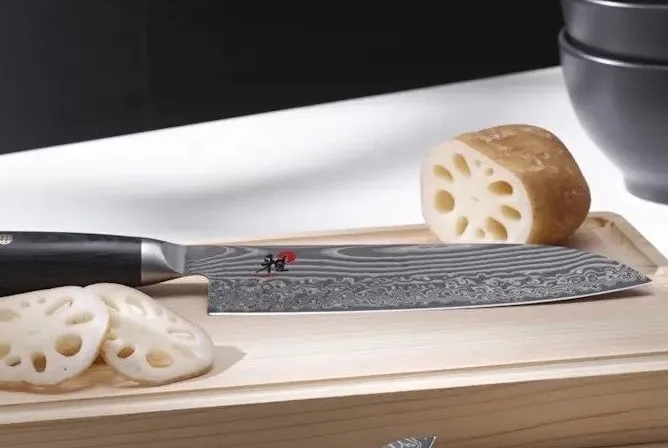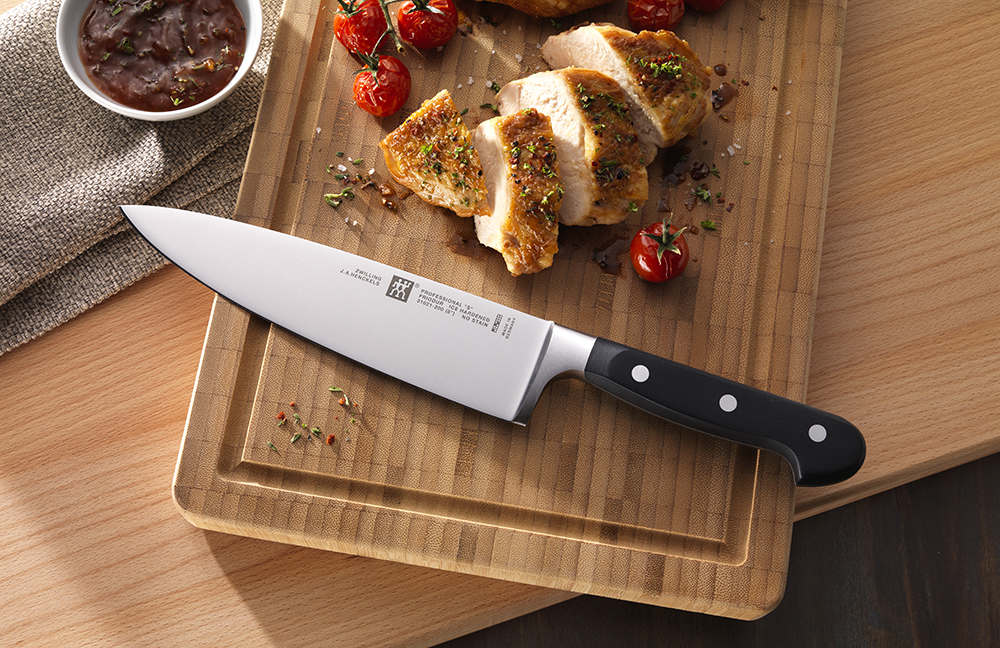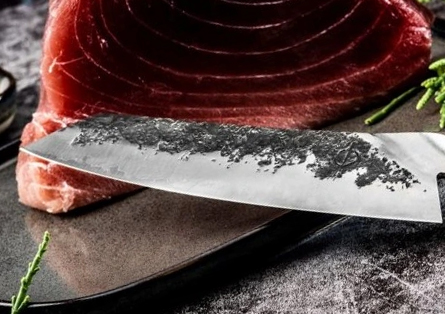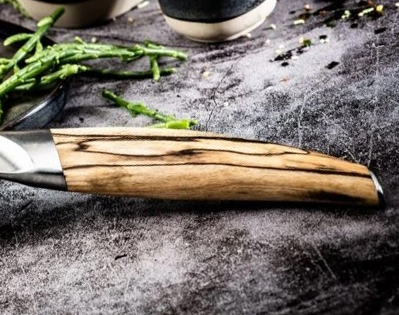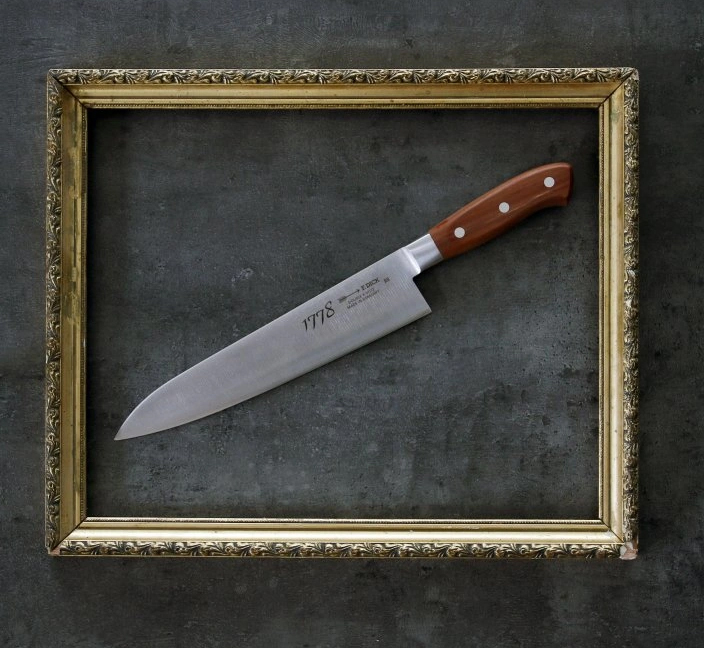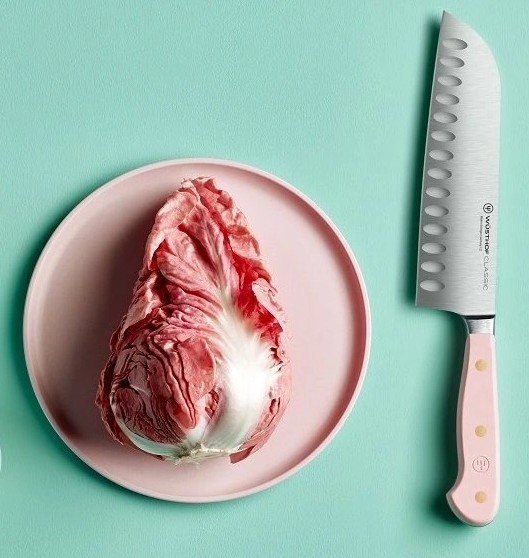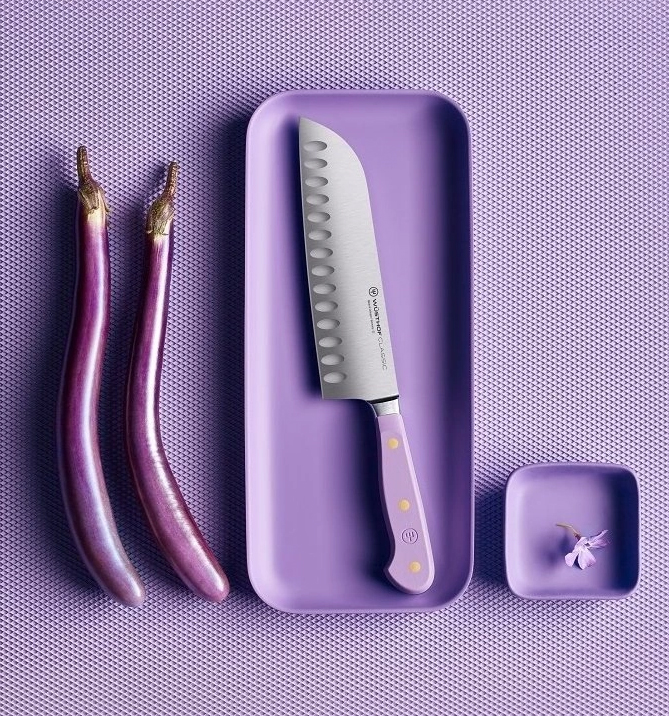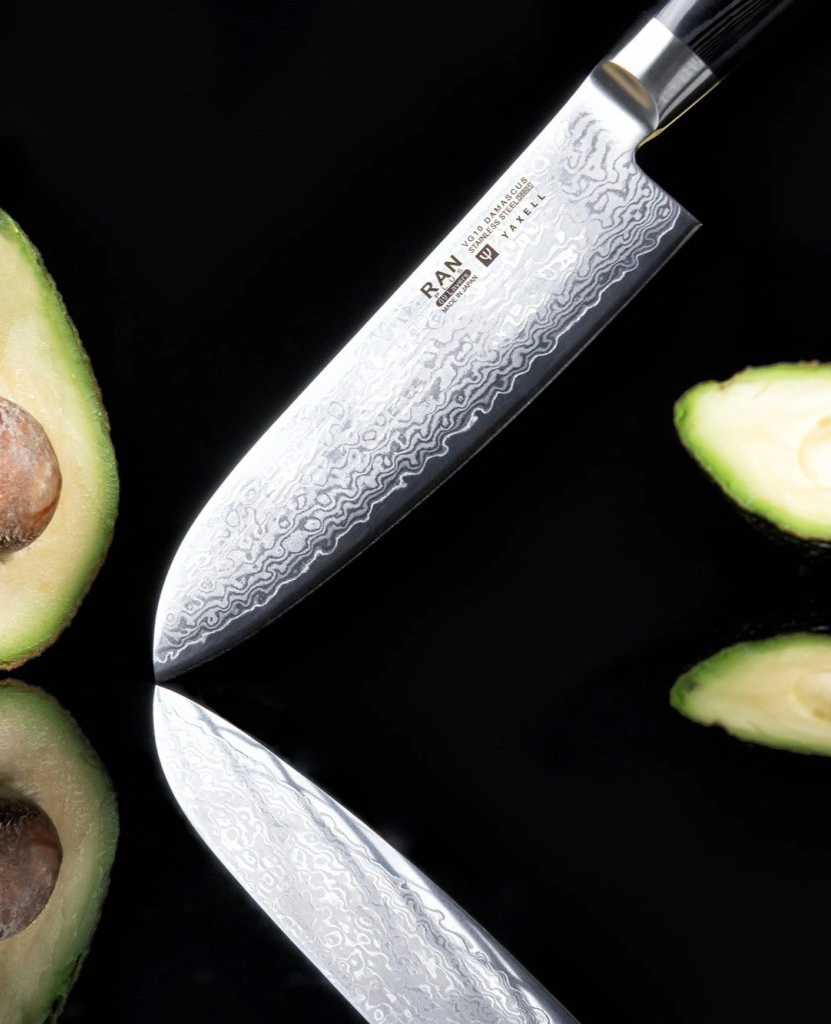1. Cleaning
- Always wash the knife by hand. High temperatures and solvents used in the dishwasher accelerate wear.
- Use mild detergent and a soft sponge for washing, coarse sponges and aggressive detergent could damage the surface of the blade and handle.
- After washing the knife immediately thoroughly dryto prevent corrosion.
2. Grinding
- For daily use, it is advisable to sharpen the knife at least once every two weeks. If you use the knife only occasionally, then you can sharpen less frequently. Once a year, and whenever the blade shows deformation or damage, the knife should be left in the hands of professionals.
- Use only high-quality lenses for sharpeninggrinding stones or water stones - these are ideal for santoku knives.
- To ensure optimum sharpness, maintain a 15-20 degree angle when grinding.

